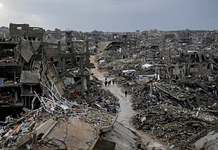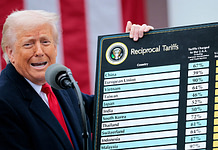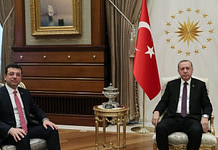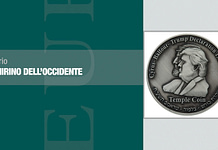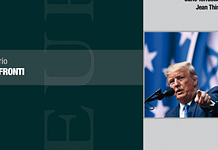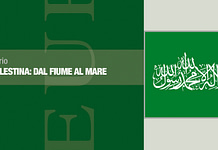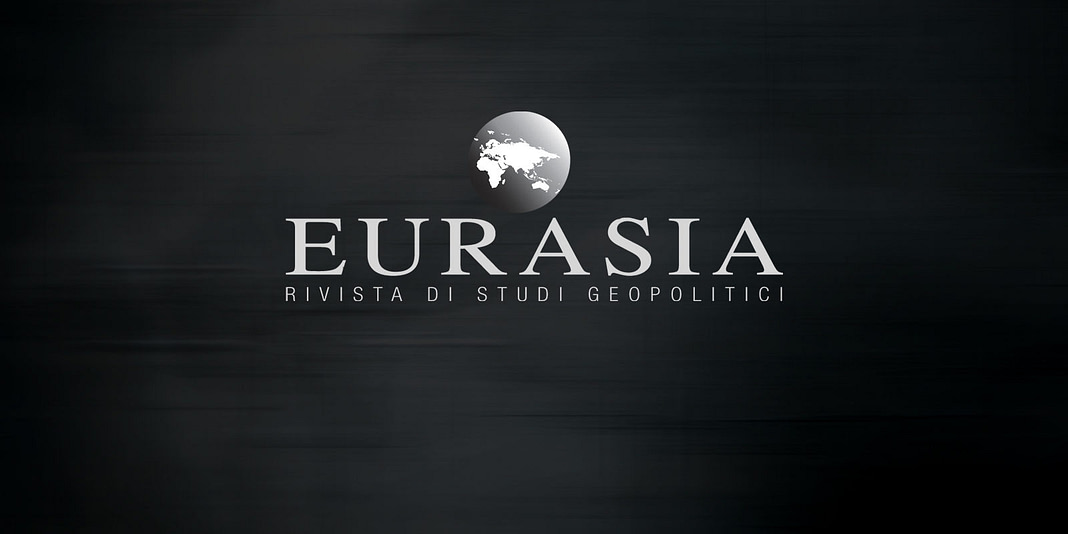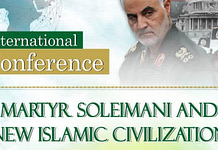The new multipolar system is being consolidated. The main actors are the US, China, India and Russia. While the European Union is completely absent and in hiding in the framework of indications-diktats coming from Washington and London, some South American countries, particularly Venezuela, Brazil, Bolivia, Argentina and Uruguay, are showing their steady willingness to actively participate in the construction of the new world order. Russia, with its central position in the Euro-Asian land mass, its vast size and its current orientation stamped on foreign policy by the Putin-Medvedev tandem, will probably be the keystone in the new planetary structure. But to achieve this epochal function, it must overcome some internal problems: first of all, those regarding the demographic question and the modernization of the country, while on the international level it must consolidate relations with China and India and establish strategic agreements with Turkey and Japan as soon as possible. Above all, it must clarify its position in the Near and Middle East.
Reflections on the current scenario
To quickly examine the current world scenario and to better understand the current dynamics that configure it, we propose a classification of the players, considering them in terms of both the function that they perform in their geopolitical space or sphere of influence, and as entities susceptible to profound evolution based on specific variables.
The current international framework shows us at least three principle classes of players: the dominant players, the emerging players and the group of chasers and subordinates. To these three categories must be added, for analytical reasons, a fourth one made up of those nations that are left out, for different reasons, of the game of world politics, and who are in search of a role.
The dominant players
Belonging to this first group are those countries that for their particular geopolitical posture, identifying themselves as pivot areas, or for the projection of their military or economic force, determine the choices and the international relationships of the remaining countries. The dominant players also directly influence some global organizations including the International Monetary Fund (IMF), the World Bank (WB) and the United Nations (UN). Among the nations presenting such characteristics, although with different nuances, we can count the US, China, India and Russia.
The geopolitical function currently exercised by the US is to constitute the physical centre and guide of the western system born at the end of the Second World War. The main characteristic of the North American country, in relation to the rest of the planet, is given by its expansionism, put into play with a particular aggressiveness and the fielding of military equipment on a global scale. The imperialistic nature due to its specific condition of maritime power imposes on it colonialist behavior toward vast portions of what it improperly considers its geopolitical space (1). There are essentially three variables that could determine a change of role for the US: a) the structural crisis of the neo-free trade economy; b) imperialist elephantitis; c) potential tension with Japan, Europe and some central-south American countries.
China, India and Russia, as nation-continents with a “terrestrial vocation”, aim at carrying out their respective macroregional functions in the Eurasian setting based on a common geopolitical orientation, moreover in an advanced phase of organization. Nevertheless, such functions are conditioned by several variables, among which we highlight:
-
politics of modernization;
-
tensions due to lack of social, cultural and ethnic homogeneity within their borders;
-
the demographic question which imposes adequate and diversified solutions for the three countries.
Regarding the variable relative to politics of modernization, we note that these are overly interrelated with the western system in economic-financial aspects, especially with the US, often removing Eurasian nations’ initiative from the international contest, exposing them to the pressures of the international system, mainly made up of the UN, IMF and WB triad (2) and especially, imposing on them the principle of economic interdependence, historical fulcrum of the US’s economic expansion. In relation to the second variable, we note that the scant attention paid by that Moscow, Beijing and New Delhi to the containment or solution of their respective endogeneous tensions presents their main antagonist, the US, the chance to weaken their own prestige and block the structuring of the Euroasian area. Finally, for the third variable, we hold that the demographic policies un-coordinated among the three Eurasian powers, especially Russia and China, could in the long term create conflict in the creation of a balanced continental system.
Relationships among the members of this class set the principal rules of world politics.
Considering the presence of a good four nation-continents (three Eurasian nations and one North American), it’s possible to define the current geopolitical system as multipolar.
The emerging players
The category of emerging players brings together those nations that set off particular geopolitical or atout, trying to free themselves from the decisions imposed on them by one or more members of the limited club of the first type. While the immediate goal of the emerging players is searching for regional autonomy and, therefore, exit from the sphere of influence of the dominant powers, to be fulfilled mainly through detailed agreements and regional, trans-regional and extra-continental alliances, that stratagem is made up by active participation in the game of regional and even global decision making. Among the countries increasingly assuming the connotation of emerging players we can list Venezuela, Brazil, Bolivia, Argentina and Uruguay, Recep Tayyip Erdoğan’s Turkey, Yukio Hatoyama’s Japan and, although with some limitations, Pakistan. All these countries belong to the de facto so-called “Western” geopolitical system, led by Washington. The fact that many nations that were, in the bipolar period considered part of a cohesive system can be now considered emerging and so susceptible to come together in the constitution of new geopolitical poles leads us to think that the structure erected by the US and Great Britain, as we know it, is becoming extinct or is undergoing a profound evolution. The growing militarization the that lead nation imposes on bilateral relationships with these nations seems to support the latter hypothesis. The common continental vision of the emerging South American countries and the establishment of important economic, commercial and military agreements make up the basic elements to configure the South American territory as a future pole of the new world order. (3).
The emerging players increase their degree of freedom in relation to alliances and frictions among members of the dominant players’ club and the geopolitical awareness of their own ruling class.
The number of emerging players and their position in the northern (Turkey and Japan) and southern (Latin American countries) hemispheres, besides accelerating the consolidation of the new multipolar system, delineates two principal axes: Eurasia and Indo-Latin America.
The chaser-subordinates and subordinates
The designation of chasers and subordinates proposed here is intended to highlight the geopolitical potential of their members in relation to their passage to the others. We consider as chasers-subordinates those players who find it useful, for affinity, various interests or particular historical conditions, to be part of the sphere of influence of one of the dominant players. Among these we can mention for example the Republic of South Africa, Saudi Arabia, Jordan, Egypt and South Korea. The subordinates of this type, since they “follow” the US as lead nation, except for disturbances provoked or managed by others, share its geopolitical destiny. The relationship that exists between these players and the dominant country is of the mutatis mutandis type, subordinate.
On the other hand, the actors outside the leader’s natural geopolitical area are tout court subordinate, under its dominance. The class of subordinate countries is marked by the absence of autonomous geopolitical conscience, or, even better, by the incapacity of the ruling class to make the most of minimal elements that are sufficient to propose and draft a geopolitical doctrine. There are many and varied reasons for this absence, including to name a few fragmentation of the geopolitical area into too many state entities; cultural, political and military colonization exercised by the dominant state; economic dependence on the lead country, particular and close relationships between the global dominant player and the national ruling classes which, configuring themselves as real oligarchies, worry more about their own survival than the interests of the population and country that they should represent and support. The members of the European Union fall into this category, except for Great Britain because of its special relationship with the US. (4)
The European Union’s membership in this class of players is due to its geopolitical and geostrategic position. In the setting of American geopolitical doctrines, Europe was always considered, up until the second world war, a bridgehead toward the center of the Eurasian landmass. (5) That role conditions relationships between the EU and countries outside the western system, especially Russia and the countries of the Near and Middle East. Other determinants are the defense system of the EU and its military alliances which particularly and deeply influence internal politics and economic strategies of its members, especially concerning provision of energy resources (6) and of strategic materials, as well as choices in technological research and development. The geopolitical situation of the EU seems to be further aggravated with the new course imparted by Sarkozy and Merkel to their respective foreign policies, aimed more at constituting a trans-Atlantic market than with reinforcing the European one.
The variables that could currently permit member countries of the EU to pass into the category of emerging players concern the quality and the degree of intensification of their relationships with Moscow regarding energy supply (North and South Stream), security (NATO) and near- and middle-eastern policy (Iran, Israel). The case of Turkey demonstrates that this is possible. Notwithstanding the NATO mortgage tying it to the western system, Ankara, levering its relationship regarding energy with Moscow and assuming an eccentric position on the Israeli-Palestinian question relative to Washington’s directives, is on the road to emancipating itself from North American protection. (7)
The chasers and subordinates, because of their weakness, represent a possible area of encounter for the poles of the new world order.
Those left out
All of the other countries are found, logically, in the category of those left out. From a geostrategic point of view, the excluded countries make up an obstacle to the goals of one or more of the dominant players. Among the countries in this group a particular emphasis is placed on Syria, Iran, Myanmar and North Korea, because of their relationship with the US and the new multipolar system. In the framework of the American strategy to encircle the Eurasian landmass, control of the areas currently defended by these nations represents a priority objective to be met in the short-medium term. Syria and Iran interfere with the realization of North American project for the New Great Middle East, that is, total control of the long wide strip from Morocco through to the Central Asian republics, the real soft underbelly of Eurasia. Myanmar is a potential access route to the Sino-Indian space starting from the Indian Ocean and a strategic position for control of the Gulf of Bengal and the Andaman Sea. North Korea, besides offering access toward China and Russia, makes up with the rest of the Korean peninsula (with South Korea) a strategic base for the control of the Yellow Sea and the Sea of Japan.
The above-mentioned excluded countries are, based on relationships that they cultivate with the new dominant players (China, India, Russia) and with other emerging countries could enter into the game of world politics and so take on an important functional role in the frame of the new multipolar system. This is the case with Iran. Iran enjoys the status of observer country of the Collective Security Treaty Organization (CSTO), seen by many analysts as the Russian answer to NATO, and is a candidate to join the Shanghai Cooperation Organization (SCO), whose members include Russia, China and the Central Asian republics, and in addition has solid economic-commercial relations with the largest countries of Indo-Latin America.
The rewriting of the new rules
The countries belonging to the class of dominant players described above aim at projecting their own influence, for the first time after a long bipolar period and the short unipolar phase, over the whole planet with the scope of participating, with specific ways and goals, in the creation of a new global geopolitical order. At the end of the first decade of the 21st century we witness the return of global policy organized on a continental basis. (8) The prize is represented not only by the hoarding of energy and raw material resources and the protection of important geostrategic junctions, but especially by the number of players and the complexity of the global scenario, and by the rewriting of new rules. These rules, resulting from the delimiting of new spheres of influence, will define, for a long period of time, the relationships among the continental players and so also a new right. It’s no longer a right between nations exclusively made up of western ideologies, substantially based on the right of citizenship as developed starting from the French Revolution and on the concept of the nation-state, but a right that holds against political sovereignty as concretely manifested and structured in different cultural settings of the whole planet.
The USA, although still in finding itself in a profound state of prostration caused by a complex economic-financial crisis (which has underscored, moreover, structural lacks and weaknesses of the bi-oceanic power and of the entire western system), from the continuing military impasse in the Afghan theatre and the loss of control of vast portions of South America, still pursues in continuity its geopolitical doctrines of recent years, to put pressure on Russia. Now, the destructuring of Russia, or at least its weakening, could represent not only an objective for the US that it has chased since at least 1945, but also an opportunity to gain time and lay out effective remedies for the solution of its own internal crisis and reformulation of the western system.
And it is by keeping that objective clearly in mind that it is easier to interpret the foreign policy recently adopted by the Obama administration toward Beijing and New Delhi. A policy that, even if aimed at recreating a climate of trust between the two Eurasian powers and the United States, does not seem to give the hoped-for at all, because of excess pragmatism and exaggerated unscrupulousness that seems to mark both President Barack Obama, and his Secretary of State, Hillary Rodham Clinton. One example (out of many) of this freedom from prejudice and pragmatism, as well as of lack of diplomacy, regards the conflicting relationships that Washington has recently entertained with the Dalai Lama and with Beijing.
Such behavior, given the weak conditions in which the ex-hyperpuissance finds itself, are a sign of weariness and nervousness with which the US’s current leadership seeks to face and buffer the progressive rise of the Eurasian nations and the reaffirmation of Russia as a world power. The relationships that Washington cultivates with Beijing and New Delhi run in parallel tracks. On the one hand the USA is trying, based on the principle of economic interdependence and through the fielding of specific financial and monetary policies, to insert China and India in to the setting they call the global system. This system is, in reality, a projection of the western system on a global scale, since the rules on which the former would be based are exactly those of the latter. On the other hand, through a continual and pressing defamatory campaign, the US is trying to discredit the two Eurasian nations’ governments and destabilize them, leveraging contradictions and internal tensions. The current strategy is substantially an updated version of the policy known as congagement (containment, engagement), this time applied not only to China but also, partially, to India.
It should still be underlined that the certain datum of this Democratic administration, installed in Washington in January 2009, is the growing militarization with which it’s tending to condition its relations with Moscow. Beyond the pacifist rhetoric, Nobel Laureate Obama is in fact following, in pursuit of global domination, the guidelines laid out by previous administrations that can be boiled down to these two: a) expansion and extension of military defense; b) balkanization of the whole planet along ethic, religious and cultural lines.
Faced with the US’s clear and manifest tendencies toward world power – recently much asserted by the Old Testament religious ideologues (9), rather than by a careful analysis of the current situation with its Realpolitik imprint – China, India and Russia, to the contrary, seem to be quite aware of the daily conditions that call them to assume power at both a continental and a global level. That assumption seems to explain through actions aimed at the creation of a grater and more articulated Eurasian integration, as well as the support for South American countries’ procontental policies.
Russia’s centrality
Russia’s refound world stature as protagonist on the world scene imposes some analytic reflections to understand its position in the different continental and global spheres, as well as the variables that could modify it in the short and medium term.
While in relation to the Euro-Afro-Asian land mass, the central role of Russia as its heartland, as fundamentally formulated by Mackinder, is reconfirmed by the current international situation, its function in the consolidation process of the new multipolar system is, however, more problematic and more complex.
Backbone of Eurasia and Eurasian bridge between Japan and Europe
The elements that have allowed Russia to reaffirm its importance in the Eurasian context, very briefly, are:
-
reappropriation by the state of some strategic industries;
-
containment of secessionist thrusts;
-
“geopolitical” use of energy resources;
-
politics aimed at the recovery of “near abroad” countries;
-
constitution of the Russia-NATO partnership, discussions meant to contain the process of enlargement of the Atlantic military system;
-
fabric of relationships on a continental scale, focused on an integration with the central Asian republics, China and India;
-
constitution and qualification of collective security arrangements (CSTO and SCO).
If the management of the aggregate of these elements, first by Putin and then by Medvedev, has demonstrated in the current historic conditions Russia’s role as the backbone of Eurasia, and so as the gravitational area for any process aimed at continental integration, nevertheless it hasn’t pointed out a structural character, important for Russo-European and Russo-Japanese relationships, that is, as the Eurasian bridge between the European peninsula and the island arch of Japan.
If Russia is considered as the bridge Eurasian bridge between the Europe and Japan it obligates the Kremlin to make a strategic decision for future development of the world scenario, that of destructurization of the western system. Moscow can successfully reach that objective in the medium and long term, intensifying relationships it cultivates with Ankara regarding large infrastructure (South Stream) and establishing new ones regarding security of common interest. This type of agreement could surely set off an earthquake inside the European Union, forcing European governments to take a clear position between accepting increased subordination to US interests or the prospect of a Euro-Russian partnership (in practice, Euro-Asian, considering the relationships between Moscow, Peking and New Delhi), better responding to the interests of European nations and people (10). Moscow should make a similar initiative with Japan, making it the strategic partner in the context of new relations between Peking and Tokyo and, especially setting up with China an appropriate process integrating Japan into the Eurasian security system in the setting of the Shanghai Cooperation Organization (11).
Keystone of the new world order
In relation to the new multipolar order, Russia seems to possess the basic elements to perform an epochal function, that of keystone of the entire system. One of the elements is its central Eurasian position, as set forth above, others depend on its relationships with the countries of South America, its Near and Middle East policy and its renewed interest in the Arctic zone. These four factors become problematic, seeing that they are strongly linked to the evolution of the relationships existing between Moscow and Peking. China, as noted, has economic-commercial alliances as strong as Russia’s with emerging countries of Indo-Latin America, it conducts in the Near and Middle East a policy of complete support of Iran, and it furthermore displays great attention toward Siberian and Arctic territories (12). Considering what has just been recalled, if the relations between Peking and Moscow develop in an even more emphatically Eurasian way, prefiguring a kind of strategic alliance between the two colossuses, the consolidation of a new multipolar system will benefit from an acceleration, or if the contrary, will undergo a slackening or go into a stall. The slowing or stalling would give the western system the time needed to reconfigure itself and to thus reenter the game as an equal player.
The Gordian knot of the Near and Middle East – the obligation to choose a field
Among the elements considered above, relative to the global role that Russia could perform, the Kremlin’s Near and Middle East policy seems to be the most problematic. This is due to the importance that the area in the general frame of the greater world playing field and because of the particular significance that it has taken on, starting from the Suez crisis of 1956, within the geopolitical doctrines of the US. Recall that Russian, or rather Soviet policy in the Near East, after the first pro-Zionist orientation of the years 1947 – 48, that dragged along until February 1953, when with the formal break between Moscow and Tel Aviv, it turned decisively toward the Arab world. In the system of alliances at the time, Nasser’s Egypt became the fulcrum country for the Kremlin’s new direction, while the new Zionist state became Washington’s special partner. Through ups and downs Russia, after the liquidation of the USSR, has maintained its pro-Arab orientation, although with some difficulties. In the changed regional framework, determined by three main events bear witness to the withdrawal of Russian influence in the region and the advance, including military, of the US: a) Egypt’s entry into the US sphere of influence; b) elimination of Iraq; c) unrest in the Afghan territory. The fulcrum of Russia’s Near and Middle East policy is logically the Islamic Republic of Iran.
While this has been fully understood by Peking, in the setting of strategy aimed at reinforcing the Euro-Afro-Asian continental mass, the same cannot be said of Moscow. If the Kremlin doesn’t hurry to openly declare its choice of field in favor of Tehran, using it to cut through the Gordian knot of relations between Washington and Tel Aviv, it runs the risk of thwarting its potential role in the new world order.
* Tiberio Graziani is editor of “Eurasia” journal (Italy)
1. The western system, as declared from 1945 to our period, is structurally made up of two principal and distinct geopolitical areas, the Anglo-American and the Indio-Latin American, to which we can add portions of Eurasia. The latter is made up of Europe (Eurasian peninsula or Euroafroasian hinge) and by Japan (Eurasian island ark). Indo-Latin America, Europe and Japan are consequently to be considered, in relation to the “western” system, more properly as spheres of influence of the power from across the ocean.
2. The UN, the IMF and the World Bank, in the setting of the comparison between the western system led by the US and the Eurasian powers, in fact carry out the function of geopolitical operatives on Washington’s behalf.
3. Concerning the rediscovery of Central and South America’s continental vocation in the setting of geopolitical debate, acquired in relation to the wave of globalization in the last 20 years, see, among others, the works of Luiz A. Moniz Bandeira, Alberto Buela, Marcelo Gullo, Helio Jaguaribe, Carlos Pereyra Mele, Samuel Pinheiro Guimares, Bernardo Quagliotti De Bellis; note, further, the recent publication Diccionario latinoamericano de seguridad y geopolitíca (editorial direction under Miguel Ángel Barrios), Buenos Aires 2009.
4. Luca Bellocchio, L’eterna alleanza? La special relationship angloamericana tra continuità e mutamento, (The eternal alliance? The AngloAmerican special relationship between continuity and change) Milan 2006.
5. For analogous geostrategic motives, relative to the encircling Eurasian mass, the US considers Japan as one of their bridgeheads, a mirror image to the European one.
6. In the specific sector of gas and petroleum, the US and, in part, British influence determines the choice of the EU regarding partners outside Europe, the transportation routes for energy resources and the planning of relative infrastructure.
7. A theoretical approach relative to the transition process of a state from a subordinate to an autonomous position with respect to the sphere of influence in which it is founded has been recently covered by the Argentine Marcelo Gullo, in the essay La insurbodinación fundante. Breve historia de la costrucción del poder de las naciones, Buenos Aires 2008.
8. The constant calls for continental unity from Caracas, Buenos Aires and Brasilia are significant, in that regard. In his impassioned inaugural address as president of Uruguay, held before the General Assembly of the national Parliament on March 1, 2010, the newly elected José Mujica Cordano, ex tupamaros, vigorously underscored that “Somos una familia balcanizada, que quiere juntarse, pero no puede. Hicimos, tal vez, muchos hermosos países, pero seguimos fracasando en hacer la Patria Grande. Por lo menos hasta ahora. No perdemos la esperanza, porque aún están vivos los sentimientos: desde el Río Bravo a las Malvinas vive una sola nación, la nación latino-americana”.
9. That is also in consideration of the “pro-zionist” policy that Washington carries forward in the Near and Middle East. See the long essay by John J. Mearsheimer and Stephen M. Walt, The Israel Lobby and U.S. Foreign Policy, New York: Farrar, Straus and Giroux, 2007.
10. The idea of a Euro-Russian partnership, based on the Paris-Berlin-Moscow axis, is proposed in a different context from the current one in the brilliant essay by Henri De Grossouvre, Paris, Berlin, Moscou. La voie de la paix et de l’independénce, Lausanne 2002.
11. The enlargement of the continental security and defense structures (global in NATO’s case) seems to be an index of the degree of consolidation of the multipolar system. Besides NATO, the CSTO and the initiatives in the setting of the SCO must remind us too of the Consejo de Defensa Suramericano (CDS) de la Unión de Naciones Suramericanas (UNASUR).
12. Linda Jakobson, China prepares for an ice-free Arctic, Sipri Insights on Peace and Securiry, no. 2010/2 March 2010.
Questo articolo è coperto da ©Copyright, per cui ne è vietata la riproduzione parziale o integrale. Per maggiori informazioni sull'informativa in relazione al diritto d'autore del sito visita Questa pagina.


